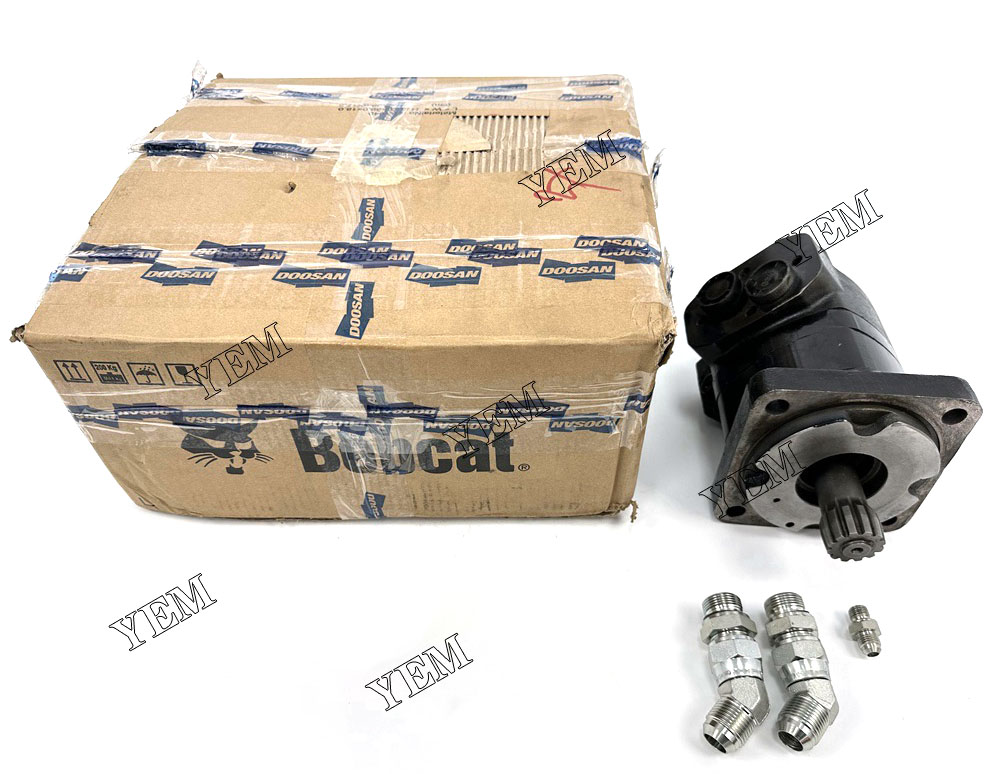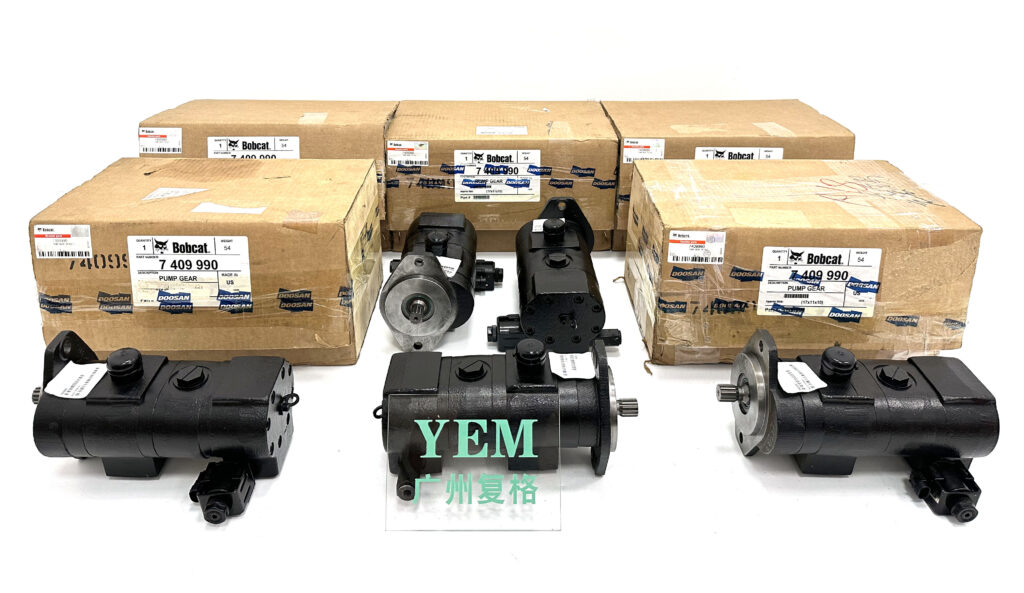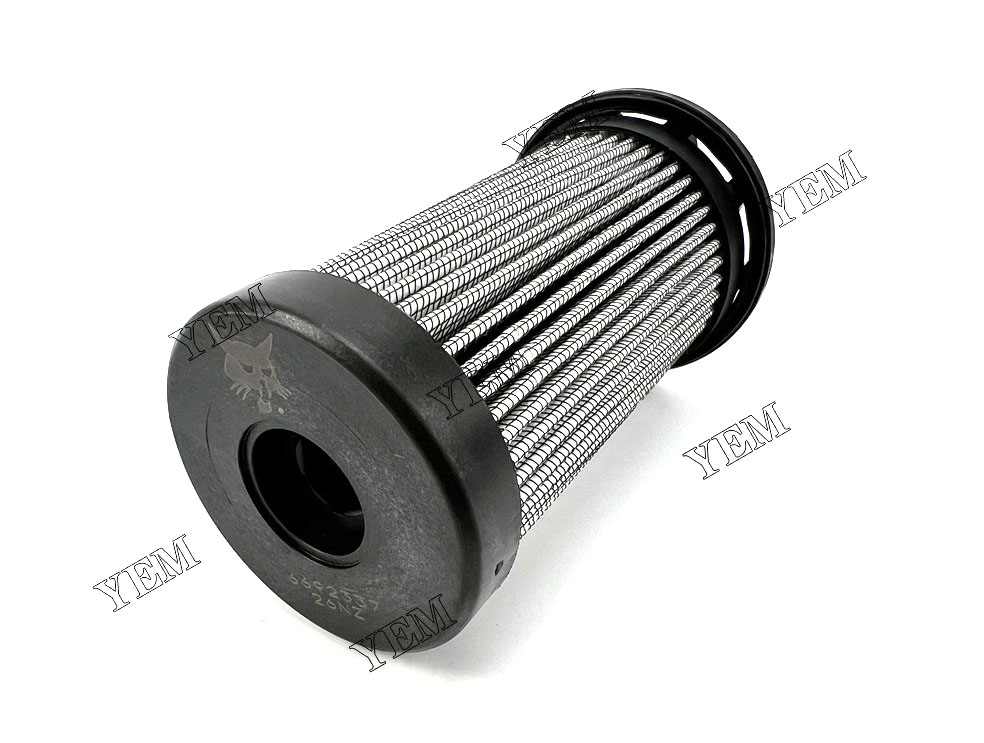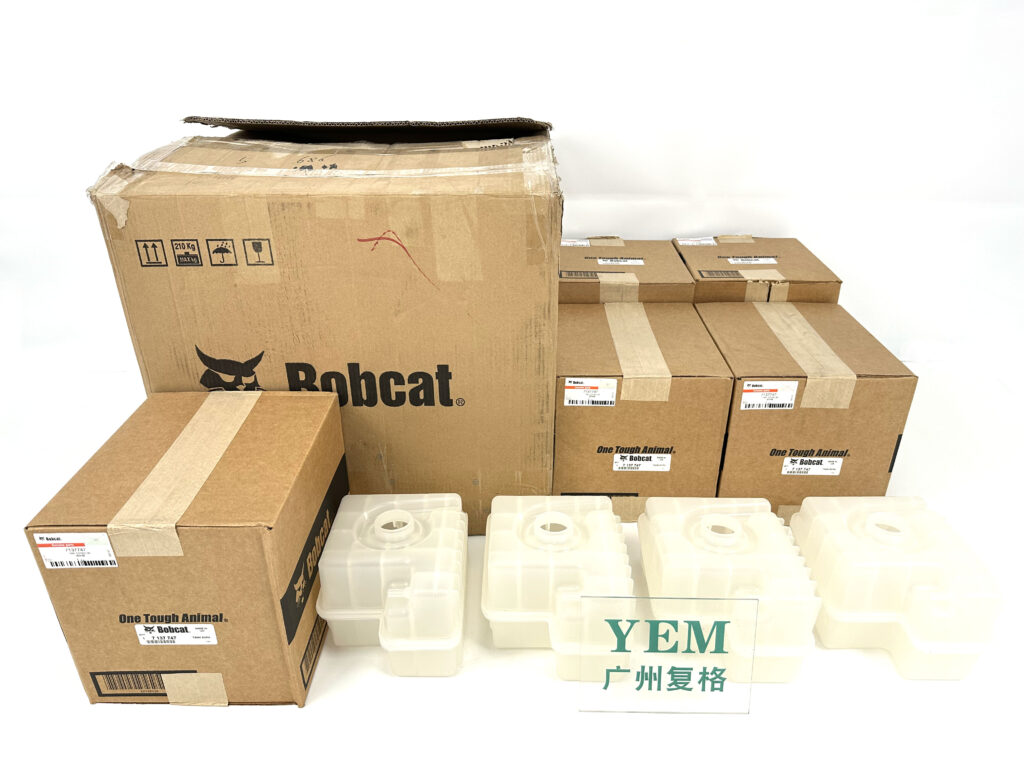Introduction to engine types and specifications
Caterpillar engines mainly include the following types:
- Diesel engine: Bobcat diesel engine is widely used in various industrial, agricultural and transportation fields. Its main features are high power, torque and durability, making it suitable for a variety of challenging working environments.
- Natural Gas Engines: Bobcat natural gas engines are an efficient and environmentally friendly choice that adhere to the strictest emissions standards while delivering performance and reliability similar to diesel engines.
- Gasoline engines: Bobcat gasoline engines are widely used in cars, motorcycles and other motor vehicles. They offer high power, low emissions and low noise.
- Diesel generator sets: Bobcat diesel generator sets are widely used for emergency backup power, load balancing and grid support, with the advantages of efficient energy conversion, low noise, low vibration and high reliability.
Bobcat engines are available in a variety of specifications and models, which are related to specific application scenarios. For example, the Bobcat C7.1 engine is a diesel engine mainly used in automobiles, containers, industrial equipment, and construction machinery. Its main performance parameters are as follows:
- Engine displacement: 7.01 L
- Continuous power rating: 151-168 kW
- Peak torque: 1084-1250 Nm
- Engine speed: 2200 rpm
- Emission standards: Tier 4 Final/Stage IV

In short, Bobcat engines of different types and specifications are used in different application fields and needs, and have the characteristics of stability, reliability and high performance.
Accessories Selection and Maintenance Guide
The key to proper parts selection and proper maintenance of your Bobcat engine. Here are some guidelines for Bobcat engine parts selection and maintenance:
- Choose original accessories: It is best to choose original accessories provided by Bobcat official dealers. These accessories have been fully tested and can provide the highest quality protection in high-pressure and high-temperature environments.
- Use the right filters: Choosing the correct type and size of air, fuel, and oil filters for your engine can help protect your engine from dust, sediment, and other impurities.
- Regular replacement of parts: Especially when the engine is in use, as time goes by and parts fail, replacement and maintenance of parts is a necessary measure to maintain engine performance.
- Regularly change the oil and oil filter: Regularly changing the oil and oil filter can help remove impurities and sediments in the engine, prevent engine wear and oxidation, and thereby extend engine life.
- Keep fault diagnosis and maintenance records: Diagnosing and solving faults in a timely manner is the key to maintaining the Bobcat engine. It is also very important to record maintenance and maintenance matters to help track inspections and identify engine problems.
- Perform regular inspections: Regularly check the engine radiator and coolant, and clean the engine’s air filter, air intake, cooler and other components to ensure the engine’s working condition.
In short, good parts selection and regular maintenance can greatly extend the service life of a Bobcat engine. It is strongly recommended to consult a professional when using a Bobcat engine and to perform maintenance and repairs in accordance with official operating guidelines and standards.

Troubleshooting and troubleshooting guide
The following is a guide to diagnosing and troubleshooting Bobcat engine problems:
- Check the check engine light: If the check engine light comes on, there may be a problem with the engine. Make sure the fault light flashes at the correct frequency and pattern, and check the error code to understand the type of fault and possible cause.
- Check the oxygen sensor: The oxygen sensor is an important sensor for detecting emissions. If there is a problem with the oxygen sensor, the engine’s fuel efficiency will decrease and it will not be able to run smoothly. Therefore, check the oxygen sensor regularly and clean the dirt-containing parts of the oxygen sensor.
- Check the battery and wires and cables: Make sure the battery is working properly and the wires and cables are clean and free of acid corrosion. Check whether the cables are connected correctly and whether the liquid level in the battery reaches the standard line.
- Regularly replace parts: Replacing maintenance parts such as crankshaft, flywheel, valve and injector, etc. is a necessary measure to maintain engine performance.
- Check throttle, fuel supply and air flow: Check for any filtration and blockage that may impede the air and fuel supply. Clear other obstructions near throttles, exhaust pipes, and induction equipment when necessary to facilitate air flow and exhaust.
- Cooling system inspection: Check valves, water pumps, radiators to ensure they are working properly, and check that the water pump is working on time.
- Check the spark plug: The spark plug is an important component in the gasoline engine. After long-term use, there may be problems such as wear and carbon pollution. Check and replace spark plugs regularly to ensure proper vehicle operation.
In short, identifying the fault and repairing it promptly will help extend the life of your Bobcat engine and maintain optimal performance. To ensure proper fault diagnosis and repair, it is important to seek help from professionals who will have better diagnostic tools and operating experience. Especially if the obvious problem cannot be solved, refer to the Bobcat Engine Repair Guide for further assistance.
Tips and advice for improving engine performance

Here are some suggestions and tips for improving engine performance:
- Air filter and air intake system: Make sure the engine air filter is clean and smooth. Consider installing a high-performance air filter, which provides higher air flow and better filtration. In addition, upgrading the air intake system can also improve air flow and increase oxygen supply, thereby improving combustion efficiency.
- Exhaust system: Upgrading the exhaust system, such as installing a high-performance exhaust pipe and muffler, can improve exhaust flow and reduce back pressure, increasing engine power and torque output.
- Electronic control unit (ECU) adjustment: By adjusting the engine control unit, ignition timing, fuel injection volume and other parameters can be optimized to improve engine performance. This usually requires professional tuning equipment and experience, and it is recommended to find a professional car tuner to perform the operation.
- Fuel selection and additives: Choose high-quality fuel and consider using fuel additives such as detergents and boosters to improve combustion efficiency and provide more power.
- Engine cooling: Make sure the engine cooling system is working properly to avoid overheating and reduced performance. Consider upgrading the radiator and using high-efficiency coolant to improve cooling.
- Tires and Shock Absorbers: Choosing the right tires and shock absorbers can improve overall performance by providing better grip and suspension stability.
- Regular maintenance: Regularly replace maintenance items such as engine oil, oil filter and air filter to ensure normal engine operation and maintain optimal performance.
Please note that before making any modifications or upgrades to your engine, be sure to understand the regulations and laws to ensure legality and safety. Since the design and condition of every engine and vehicle is different, it is recommended to consult a professional for personalized advice and guidance.
New technology and innovation
As technology continues to advance, the automotive industry is constantly seeking new technologies and innovations to improve safety, fuel efficiency, reduce emissions and improve the driving experience. Here are some of the new technologies and innovations in the automotive industry:
- Electric power: The automotive industry is gradually transitioning to electric manufacturing, battery technology is constantly improving, and electric vehicles are replacing traditional internal combustion engine vehicles. More advanced battery technology and fast charging technology are being developed, and future electric vehicles will be more efficient and convenient.
- Autonomous driving technology: The development of automation technology is bringing major changes to the modern automobile industry. Based on sensors and data analysis, autonomous driving technology is realizing automatic control and navigation of cars, which can improve road safety and reduce traffic accidents.
- Fuel economy: Technologies to improve fuel economy are also constantly evolving. Automatic parking and automatic shutdown technology can reduce fuel consumption and reduce environmental impact. Lightweight materials, aerodynamic optimization and miniaturization technologies can also reduce vehicle weight and air resistance, thereby improving fuel economy.
- Internet technology: Internet technology is becoming more and more popular, and the popularity of wireless networks and mobile devices has made vehicle connections more intelligent and convenient. Vehicle owners can interact with their vehicles via a mobile app, including remote start, location tracking and diagnostic alerts.

In short, the automobile industry is undergoing profound changes worldwide. New technologies and innovations will continue to bring about changes and updates, driving the continued progress of the automobile industry and the protection of the global environment.
Contact us
YEM Professional Excavator Parts Team is a dedicated and experienced team that specializes in providing high quality parts for excavators. With extensive knowledge and expertise in this field, we are able to provide a wide range of parts to meet the diverse needs of our customers.
Whether you need replacement parts for hydraulic systems, engine components, chassis components or any other excavator component, the YEM team has you covered. We source our products from reputable manufacturers and ensure that each part meets the highest standards of quality and durability.
In addition to their impressive product selection, the YEM team prides itself on providing exceptional customer service. We understand the importance of timely support and strive to respond to inquiries and requests in a timely manner. Our knowledgeable staff is on hand to help customers identify the correct parts for their particular excavator model and provide installation and maintenance instructions.
To get in touch with the YEM Specialized Excavator Parts team you can contact us via our website, email or phone. We are committed to building long-term relationships with our customers and are eager to assist you with all your excavator parts needs.
